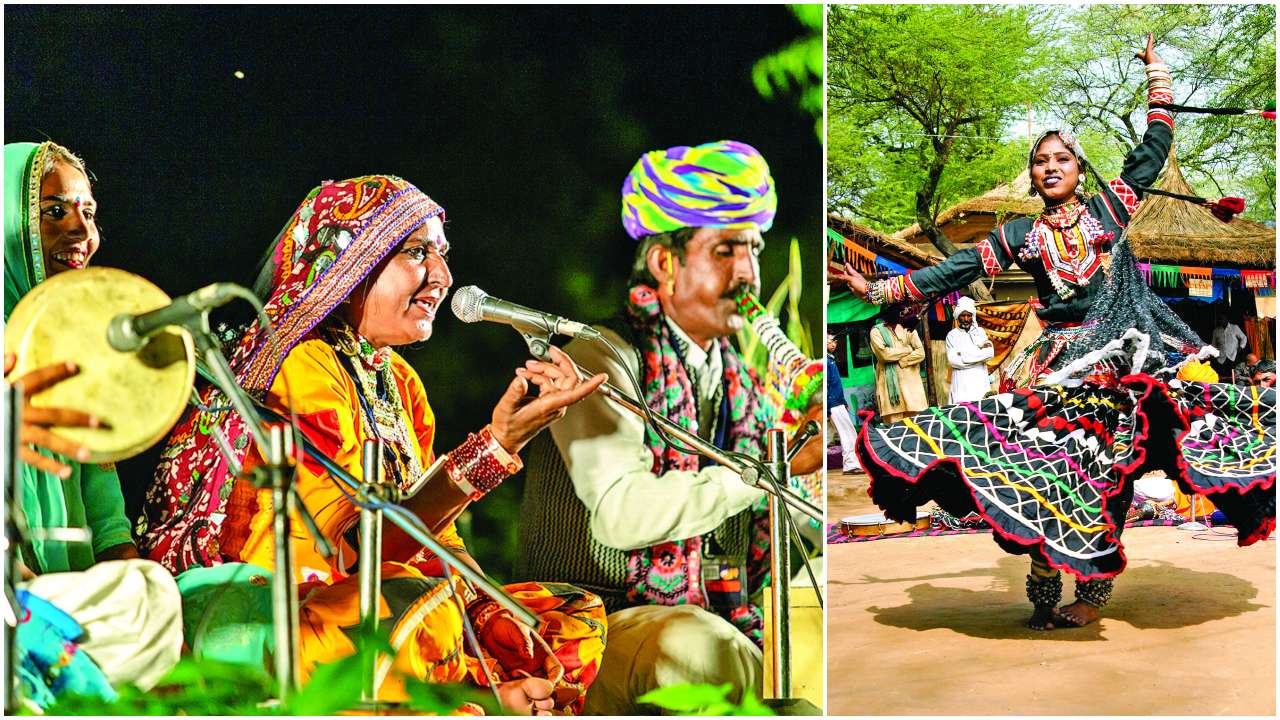
I have been catching snakes, singing these songs since I was a child," says Suguna Jogi, after a performance at the Jodhpur RIFF, where her ethereal voice had mesmerised the audience, made goosebumps rise. "I still teach my daughters and nieces to sing."
Suguna Jogi is one of the few remaining exponents of the Jogi style of singing. The Kalbelias, as her Jogi community is also named, have a history as sinuous as the snakes with which they are so closely associated.
Traditionally, a nomadic clan hailing from Rajasthan, the Kalbelias were known for their skills with capturing snakes and snake charming, as well as their healing and herbal medicinal skills. Time and changes in society and laws, however, have caused them to reinvent their identity to ensure their own survival.
"It is difficult to trace the change in the Kalbelia traditions in a linear manner, because a lot of factors simultaneously led to the gradual change from a ritualistic to a performative art form," says Jodhpur RIFF director/ producer Divya Bhatia. While the ban on snake charming came in 1991, it came after a long-fought battle by environmentalists. With scientific advancements and improvements to snake venom antidotes, the demand for Kalbelia remedies had already seen a downfall even before the ban took place. "Be that as it may, after the ban on snake charmers, one way of livelihood was reduced. And they had to find other ways," adds Bhatia.
And this is how one of the most popular folk dance forms prevalent in Rajasthan today – the Kalbelia dance, where women dress in black garb with colourful trimmings and emulate the movements of snakes – came to the forefront. "We used to play the dafli, been and manjeera, catch snakes and make them dance. This is how we earned our livelihood, as we travelled from village to village," recalls Mohini Devi, an exponent of Jogi singing, known for her unique voice that reaches incredibly high notes akin to the been or pungi. "To survive as a community, we asked our girls to dress in black and started promoting the Kalbelia dance. The girls moved their bodies like snakes and dance. People found this intriguing."
While Mohini Devi claims one reason was that they wanted to draw a parallel to snakes, Bhatia says there may've been other influences. "Some theories claim that choosing black was partly the influence of Hindi cinema, that had films on the naagin and sapera. This explains why the motifs on the black garb are so colourful."
While the dance form has seen a surge in the last two decades, the musical aspects of the Kalbelia form are slowly edging towards extinction. With reduced demand, the clan members themselves would rather pass on the dance form to the younger generations rather than the singing.
Still, with exponents like Suguna Jogi and Mohini Devi, and support from Jodhpur RIFF, who want the "art to go further, not just in our own country but across the world", perhaps there is hope left for this unique, ever-changing tradition.